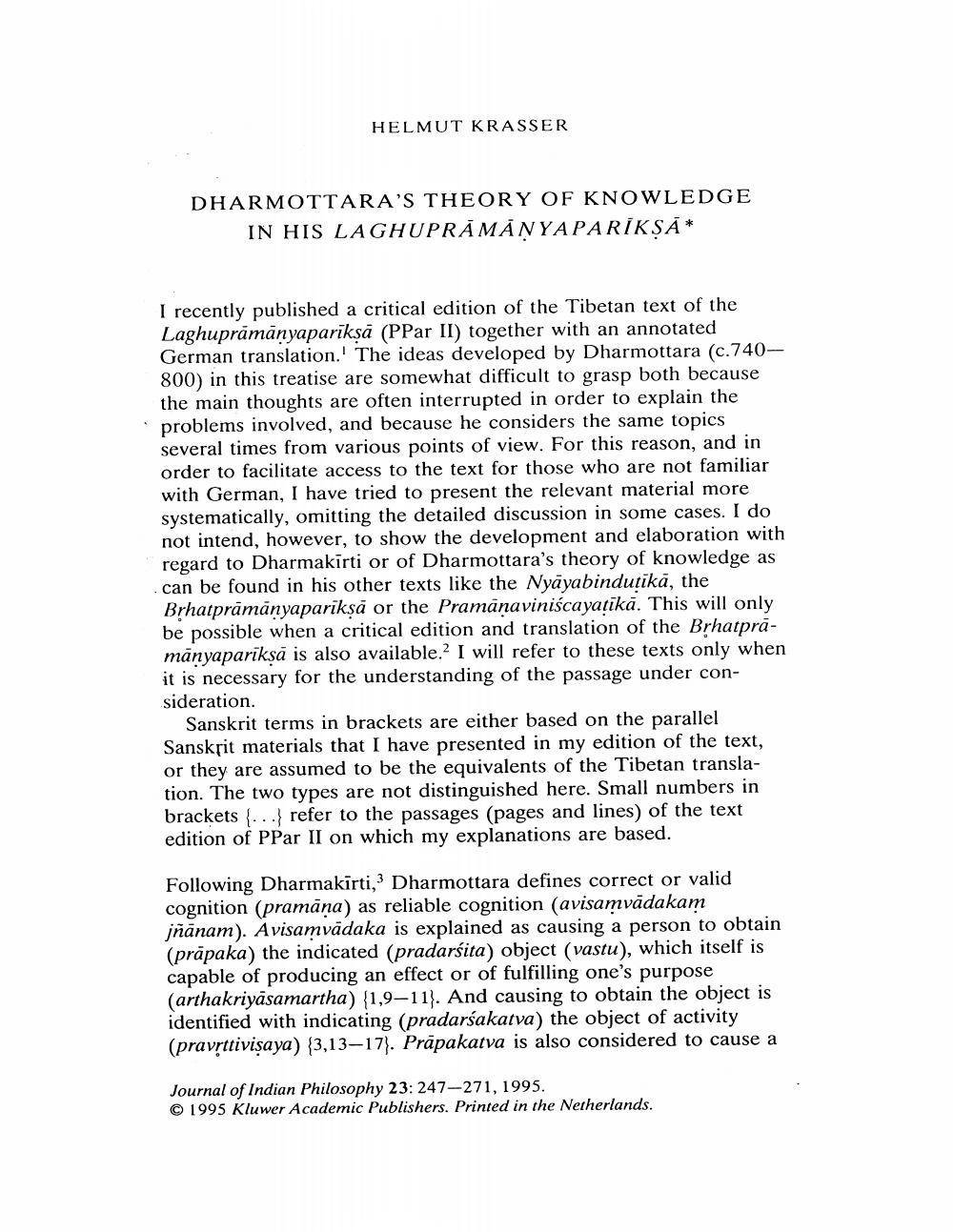Book Title: Dharmottaras Theory Of Knowledge In His Laghupramanyapariksa Author(s): Helmut Krasser Publisher: Helmut Krasser View full book textPage 1
________________ HELMUT KRASSER DHARMOTTARA'S THEORY OF KNOWLEDGE IN HIS LAGHUPRĀMAŅYAPARIKSA* I recently published a critical edition of the Tibetan text of the Laghuprāmānyapariksa (PPar II) together with an annotated German translation. The ideas developed by Dharmottara (c.740800) in this treatise are somewhat difficult to grasp both because the main thoughts are often interrupted in order to explain the problems involved, and because he considers the same topics several times from various points of view. For this reason, and in order to facilitate access to the text for those who are not familiar with German, I have tried to present the relevant material more systematically, omitting the detailed discussion in some cases. I do not intend, however, to show the development and elaboration with regard to Dharmakīrti or of Dharmottara's theory of knowledge as can be found in his other texts like the Nyāyabindutikā, the Brhatprāmānyaparīksā or the Pramanaviniscayaţikā. This will only be possible when a critical edition and translation of the Brhatprāmanyapariksā is also available. I will refer to these texts only when it is necessary for the understanding of the passage under consideration. Sanskrit terms in brackets are either based on the parallel Sanskrit materials that I have presented in my edition of the text, or they are assumed to be the equivalents of the Tibetan translation. The two types are not distinguished here. Small numbers in brackets {...} refer to the passages (pages and lines) of the text edition of PPar II on which my explanations are based. Following Dharmakirti, Dharmottara defines correct or valid cognition (pramāna) as reliable cognition (avisamvādakam jñānam). Avisamvādaka is explained as causing a person to obtain (präpaka) the indicated (pradarsita) object (vastu), which itself is capable of producing an effect or of fulfilling one's purpose (arthakriyāsamartha) {1,9–11). And causing to obtain the object is identified with indicating (pradarśakatva) the object of activity (pravrttivisaya) (3,13-17). Prāpakatva is also considered to cause a Journal of Indian Philosophy 23:247-271, 1995. © 1995 Kluwer Academic Publishers. Printed in the Netherlands.Page Navigation
1 2 3 4 5 6 7 8 9 10 11 12 ... 25
